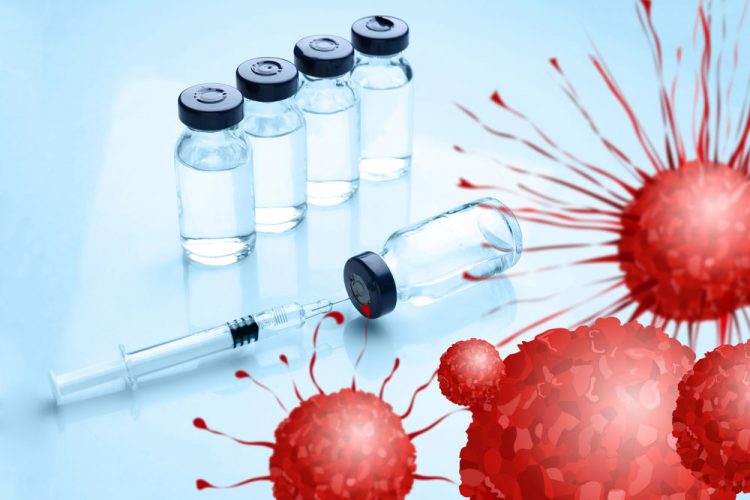Scientists test new anti-PD-L1 cancer vaccine against melanoma
Posted: 10 November 2018 | Dr Zara Kassam (Drug Target Review) | 5 comments
An experimental cancer vaccine that boosts the immune system’s ability to fight cancers could work in tandem with other cancer therapies to fight aggressive tumours, scientists have reported…


An experimental cancer vaccine that boosts the immune system’s ability to fight cancers could work in tandem with other cancer therapies to fight aggressive tumours, scientists have reported.
The researchers demonstrated that adding a molecule called Diprovocim to a vaccine can draw cancer-fighting cells to tumour sites. Their experiments in mice with melanoma suggest these vaccines could increase chances of recovery in cases where a drug therapy alone is not working.
“This co-therapy produced a complete response–a curative response–in the treatment of melanoma,” says Scripps Research Professor Dr Dale Boger, who co-led the study with Nobel laureate Bruce Beutler, of UT Southwestern.
The vaccine also prompts the immune system to fight tumour cells should they ever return, a capability that could prevent cancer recurrence. “Just as a vaccine can train the body to fight off external pathogens, this vaccine trains the immune system to go after a tumour,” Prof Boger explains.
Developed by Prof Boger and Dr Beutler, Diprovocim works as an “adjuvant,” a molecule added to a vaccine to fire up the body’s immune response. The molecule is easy to synthesize in the lab and easy to modify, which makes it attractive for use in medicine.
The new research shows that adding Diprovocim to a vaccine targeting cancer cells can have dramatic results.
The researchers tested the vaccine design on mice with a form of notoriously aggressive melanoma. All mice in the experiment were given the anti-cancer therapy anti-PD-L1. The mice were then split into three group: eight received the cancer vaccine, eight received the cancer vaccine plus Diprovocim, and eight received the cancer vaccine plus an alternative adjuvant called alum.
The researchers observed a 100 percent survival rate over 54 days in the mice given the cancer vaccine and Diprovocim. This was in contrast to a zero percent survival rate in mice given only the cancer vaccine and a 25 percent survival rate in mice given the cancer vaccine with alum.
“It was exciting to see the vaccine working simultaneously with a cancer immunotherapy like anti-PD-L1,” says Prof Boger.
Further experiments showed that using Diprovocim as an adjuvant boosts the vaccine’s cancer-fighting potential by stimulating the immune system to make cells called tumour-infiltrating leukocytes.
When the scientists tried to re-establish the tumour in these mice, “it wouldn’t take,” Prof Boger says. “The animal is already vaccinated against it.”
Prof Boger says it is encouraging to see that the vaccine with Diprovocim does not need to be injected directly into a tumour. Instead, the researchers gave it as an intramuscular injection away from the main tumour site. The vaccination did require two doses given seven days apart.
Going forward, the researchers plan to do further pre-clinical testing with this vaccine design and study how it works in combination with other cancer therapies.
Prof Boger and Dr Beutler have acknowledged a financial interest in Tollbridge Therapeutics, LLC, which has licensed the patent for Diprovocim.
The study has been published in the Proceedings of the National Academy of Sciences.
Related topics
Immuno-oncology, Immunology, Immunotherapy, Oncology, Research & Development, Therapeutics, Vaccine
Related conditions
Cancer
Related organisations
The Scripps Research Institute (TSRI)
Related people
Bruce Beutle, Dr Dale Boger









Discovery of a vaccine for cancer will never be seen.. Too much money would be lost. Cancer is big business $$$$.
Billions if not Trillions is raked in… Hospitals, Pharmaceutical companies, Charities, any business that has anything to do with cancer would suffer financial loss. One that comes to mind is wigs for patients who have lost their hair.. prosthetic items for breast cancer victims… the list is endless. It’s all about money $$$$. A privileged few will get the vaccine, The masses will be drained of their money… and suffer an agonizing death.
I am delighted to read about this newest cancer vaccine for melanoma cancer/tumors! Although this breakthrough is to late for my husband (he died 2017of melanoma that spread to his brain), I am greatly relieved that others may not suffer my husband’s fate. Thank you for publishing this article.
Imagine what that vaccine will cost if they even allow it to be distributed!
Thank you DTR for this encouraging report. It seems that the mainstream media has been distracted and has almost ignored the stunning advances over the last couple years in cancer treatment from, for example, targeted antibodies!
As scientist we are privileged in being able to shape our society.
We are responsible, along with our career ambitions, of our findings and the way we should communicate them.
Natural killer cell stimulation and effector function depend upon the integration of signals derived from two distinct types of receptors—activating and inhibitory receptors.
This synergistic activation of several receptors leads to convergence of signals toward a central signaling molecule so that its level reaches the threshold required for activation of NK cells.
The lack of inhibitory signaling coupled with induction of activating signaling shifts the balance toward NK cell activation, leading to secretion of cytokines and killing of tumor cells.
The problem of cytotoxicity depends on a wider range of proteins and the orientation is only on Checkpoint blockade immunotherapy targeting the PD-1 / PD-L1 inhibitory or a general stimulating vaccine probably limits our research and understanding of the complex process of immune evasion.